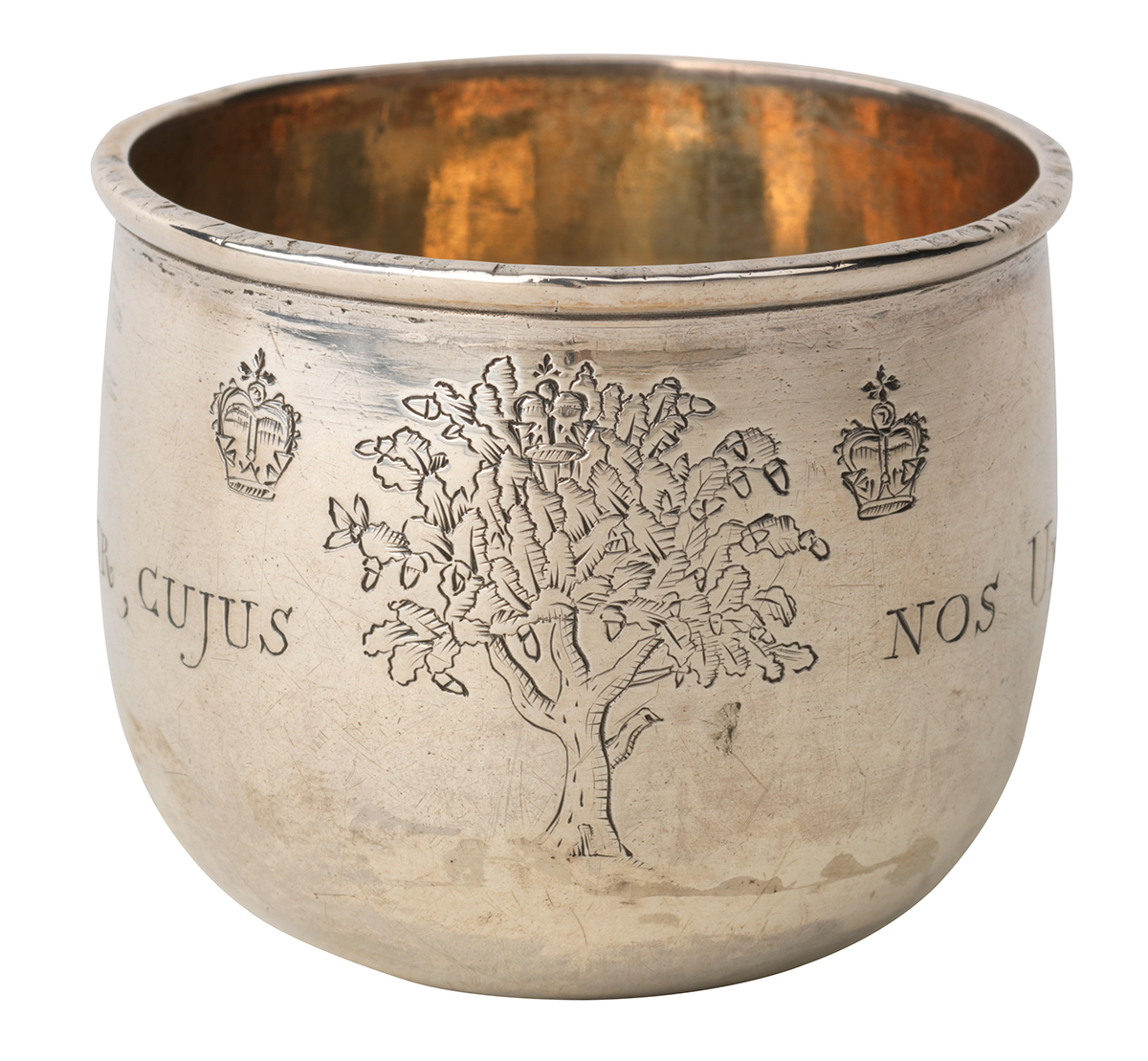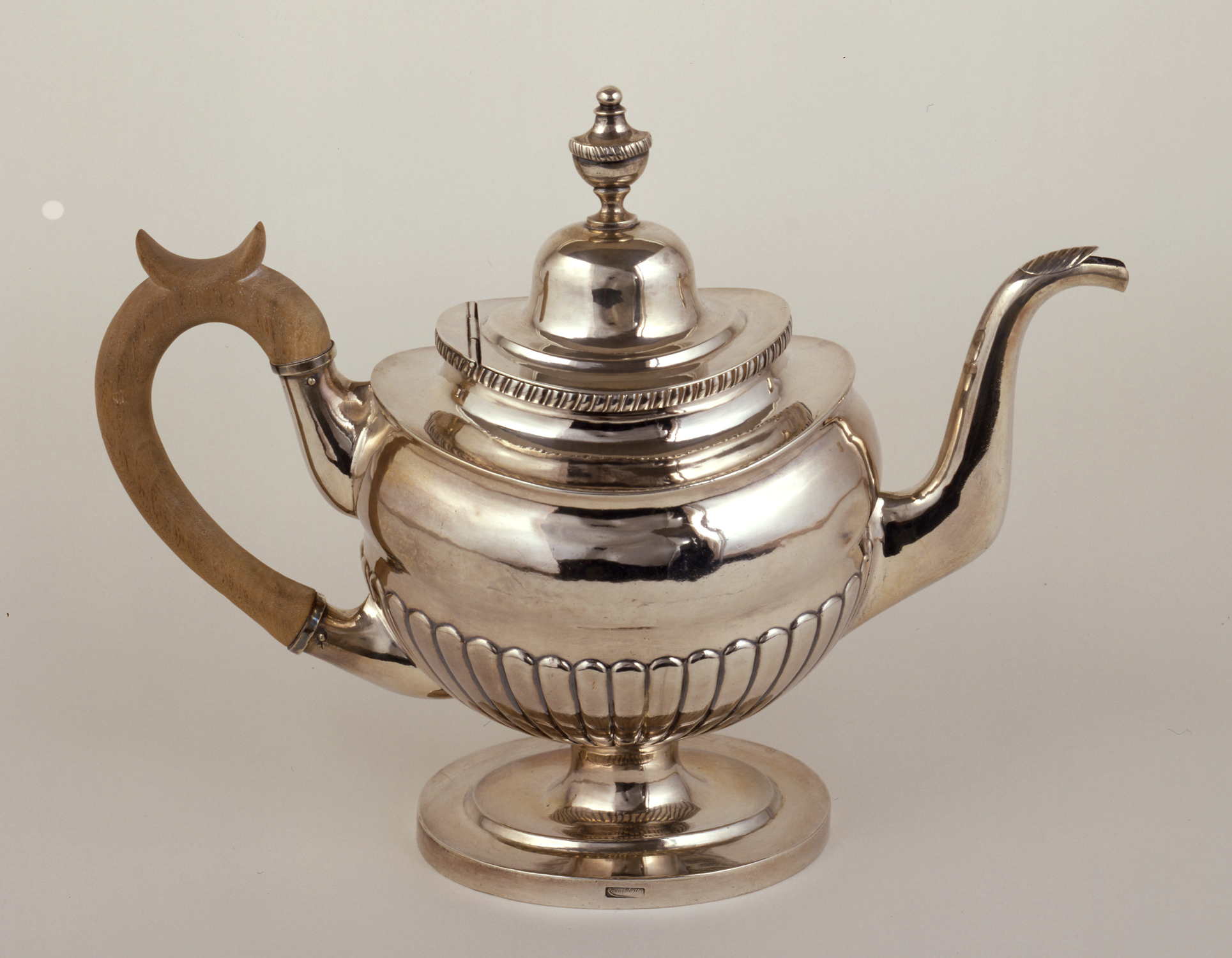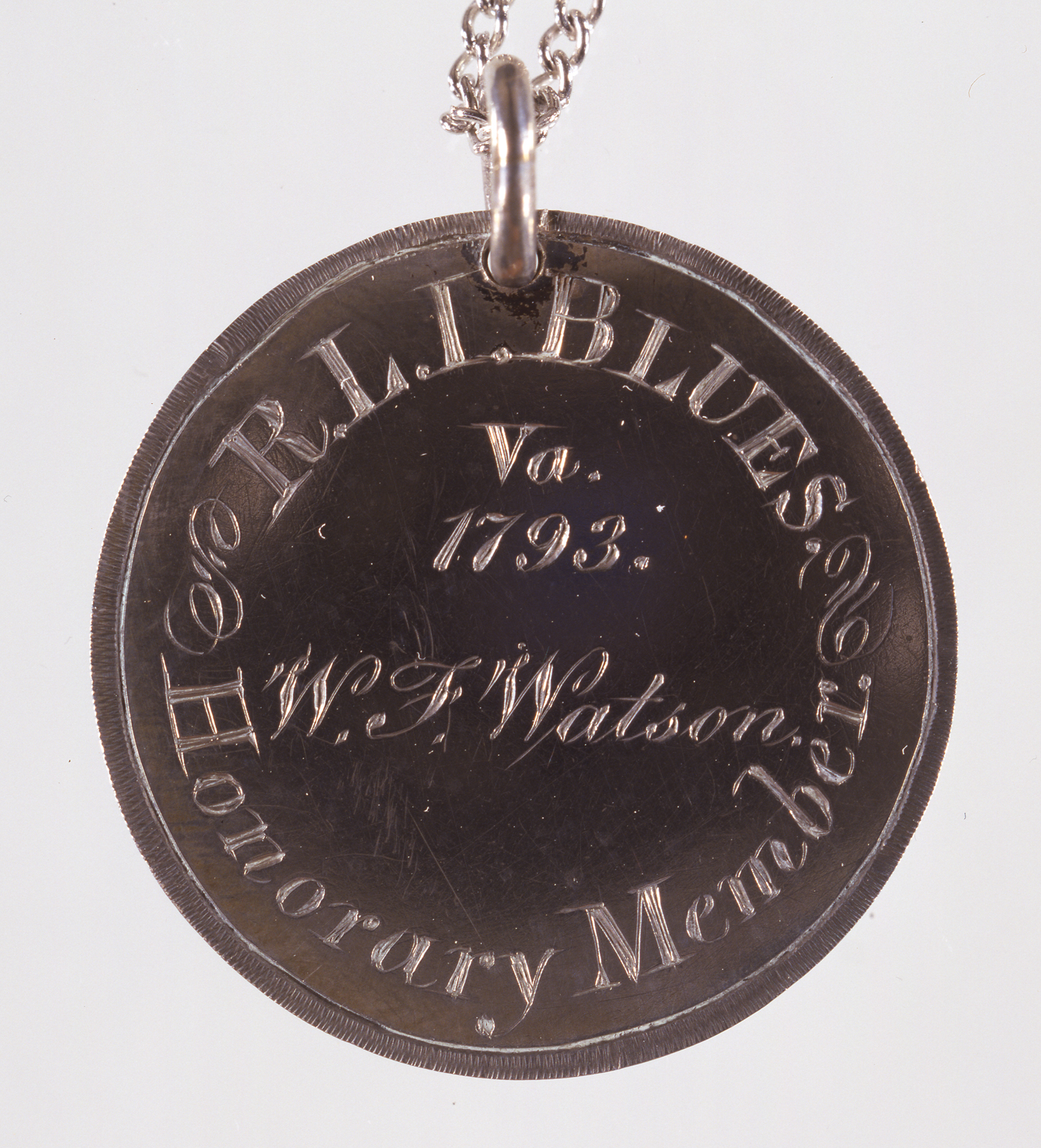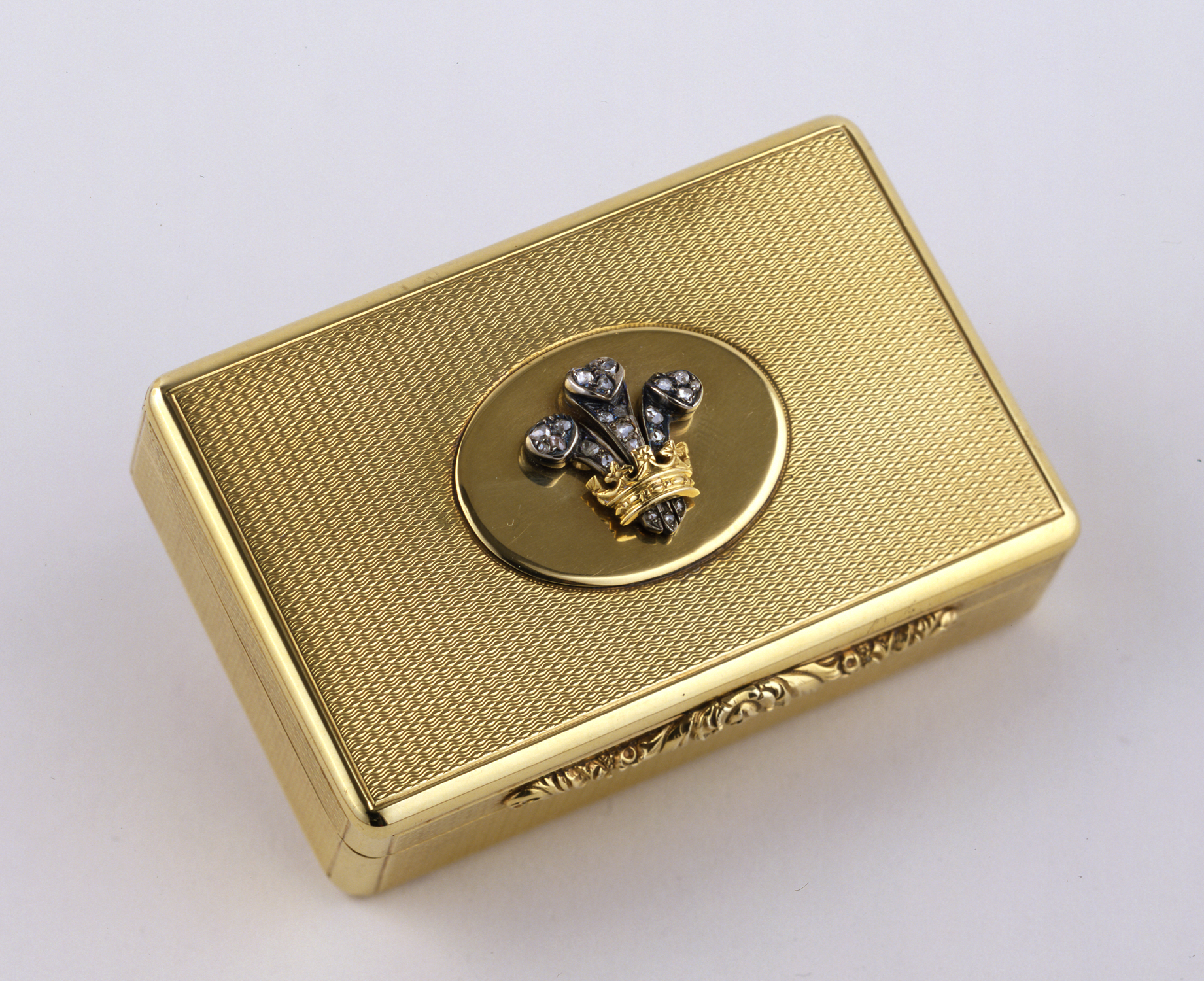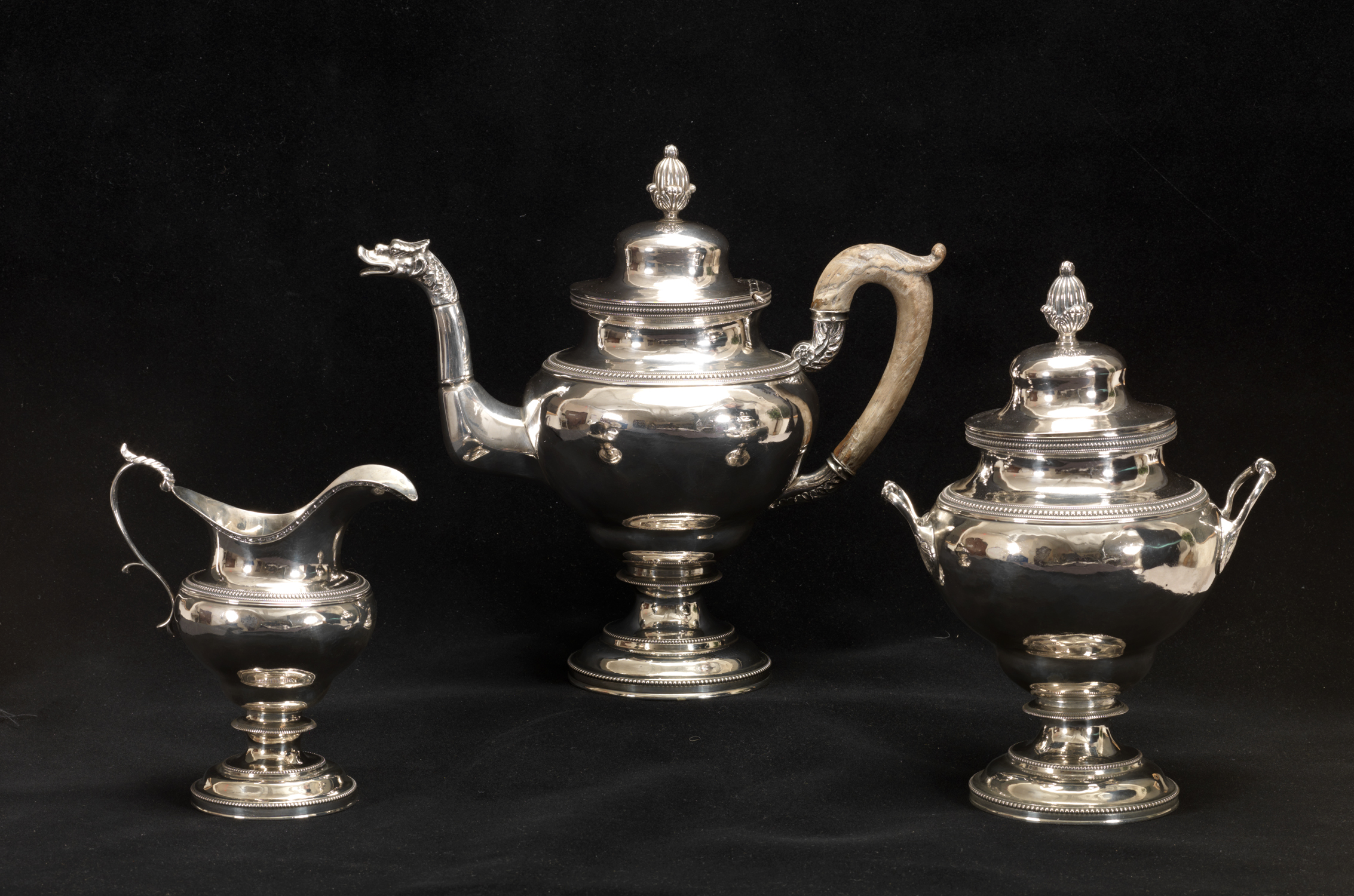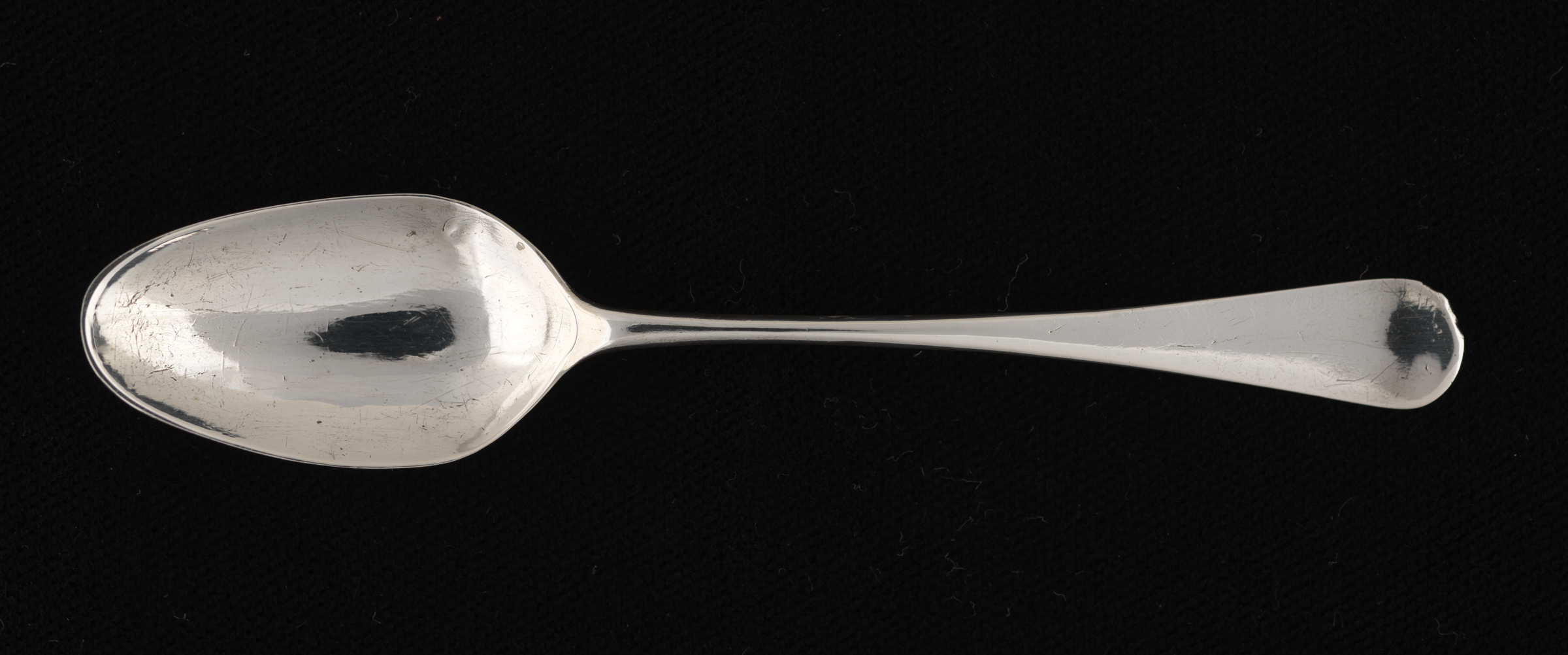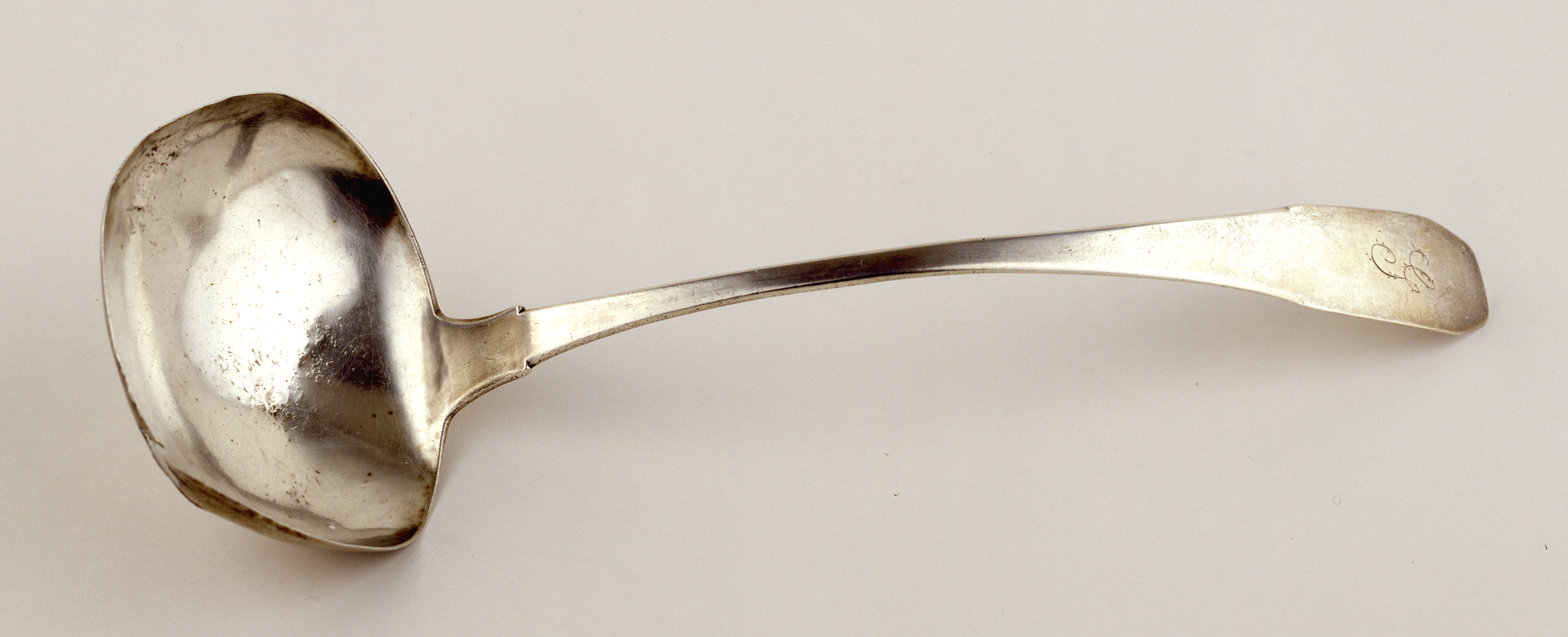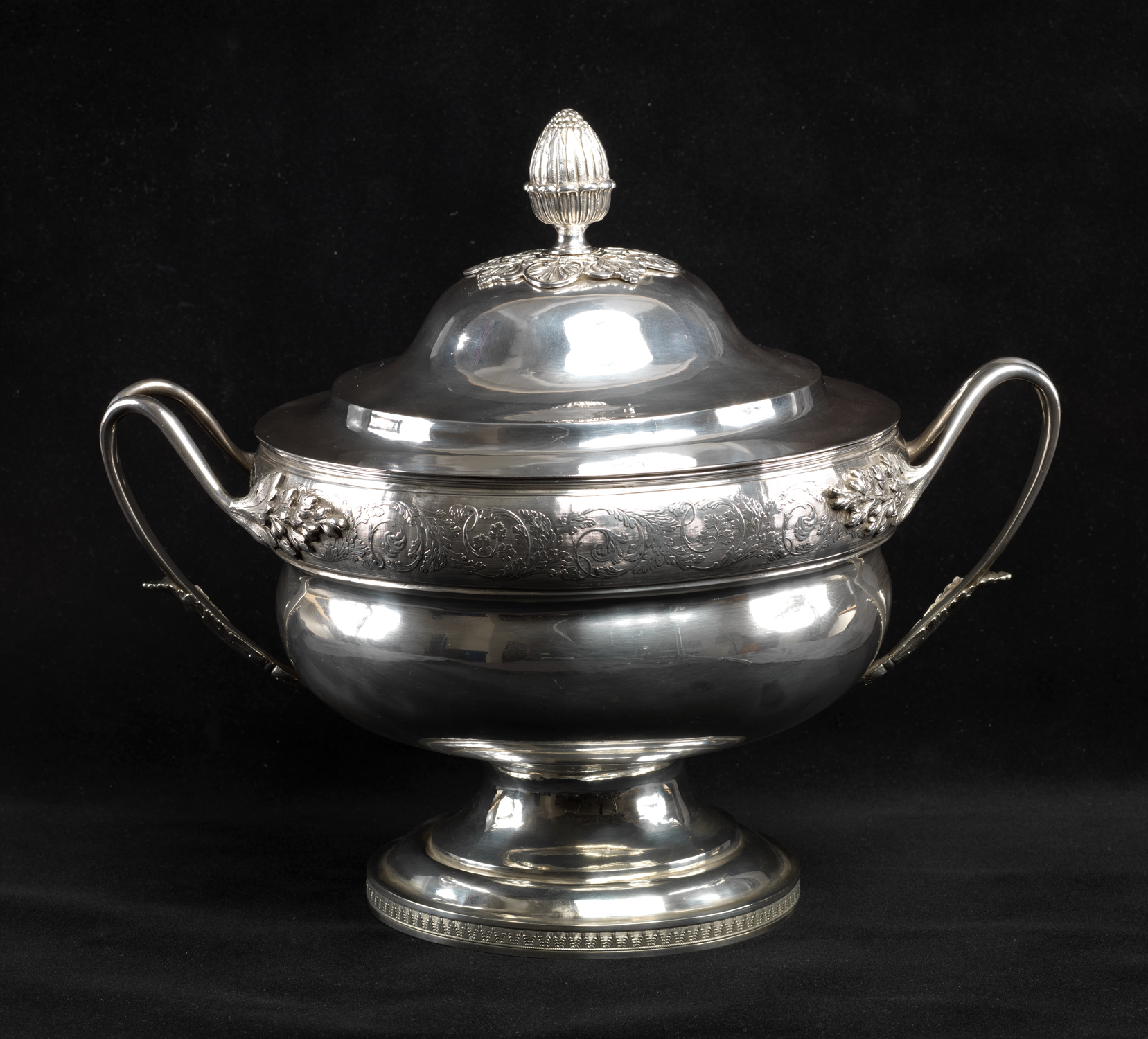Early English colonists arrived in Virginia with a love of all things silver. A rich display of silver expressed an owner's wealth and power as well as their taste and refinement. Silver is shaped by either pouring molten metal into molds or hammering it into a final shape. After 1800, however, the availability of sheet silver and pre-made parts simplified the process of making containers.
Colonial Virginians acquired much of their important silver from London. After the Revolution, population growth, a rising tide of prosperity, and the genteel aspirations of an expanding middle class greatly expanded the market for silver. By 1820, there may have been hundreds of silversmiths in Virginia, some working nearly alone, others as part of large establishments employing many journeymen and apprentices. After 1820, silversmiths dealt in finished goods manufactured in large eastern cities, and after 1850, many silversmith shops came to be called jewelry stores.
The slideshow below includes not only silver produced in major urban centers, such as Alexandria, Norfolk, and Richmond, but also works crafted in small towns like Dumfries, Fincastle, and Waynesboro, as well as images of Virginia silversmiths themselves and place settings using silver, ceramics, and linens from our collections. Many of these items were part of a gift from James H. Willcox, Jr.

